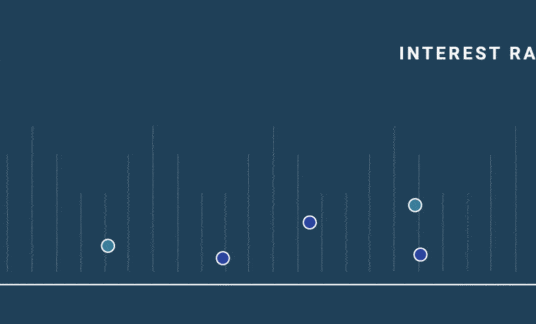Since 2011, Amazon.com has provided financing to its sellers through its Amazon Lending program.
How does it work? The e-retailer loans you funds, which you must use to directly support your Amazon business, such as with an inventory purchase. The company then automatically withdraws a percentage of sales from your seller’s account every month until you’ve repaid the loan. As a fail-safe, your inventory acts as collateral for the loan.
Why Consider Amazon Lending for Your Small Business?
There are a number of reasons why an Amazon small business loan may be right for you. Maybe you’re a business owner who lacks credit history or has a less-than-perfect credit score. Or perhaps you’re an owner who sells inventory only on Amazon and would like funding to maximize profits.
Whatever the case, let’s take a look at some of the benefits of Amazon Lending.
No Credit Requirements
Unlike lenders of other small business loans and financing products, Amazon doesn’t use your credit score to determine whether or not to lend you funds (though credit quality is used to determine APR). There’s no need to provide details about your business’s finances. The loan amount Amazon offers is based on your sales history.
Fast Access to Funds
Because the process is streamlined, access to funds is quick. Amazon’s loan offers range from $1,000 to $1,000,000 in the U.S.
Fewer Fees
While some lenders may charge application and origination fees, Amazon doesn’t. You don’t need to worry about a prepayment penalty, either.
-
Take Note
According to the company’s annual report filed with the Securities and Exchange Commission, as of December 2018, Amazon sellers benefited from about $710 million in funding.

How to Obtain Amazon Seller Financing
It’s important to note that you can’t reach out to Amazon Lending and request financing. Amazon comes to you.
If Amazon decides to extend financing to you, you’ll receive an email. At that point, you can simply accept, reject or counter the offer.
Amazon Lending Requirements for Sellers
To be considered for Amazon’s small business lending program, sellers should have a registered 1099-K in a U.S. state where the program is available. Amazon also considers the following seller criteria before extending loan offers:
- No serious complaints from customers in the last 6 months (Amazon reviews customer satisfaction metrics)
- Recent annual sales of at least $10,000
- At least 12 months of experience selling on Amazon
- Compliance with Amazon listing and style guidelines
- Sellers shouldn’t have had any Amazon Lending loans issued in the past 45 days
Amazon also reviews any outstanding complaints specific to copyright and trademark infringement when determining whether to extend credit.
Amazon Lending Terms
Loan repayment terms can extend up to 1 year. As of November 2019, APRs varied from 6.75% to 19.99%. Individual rates are determined based on loan size, term and quality of credit. Additionally, Amazon adheres to state-level maximum APR caps.
Amazon Lending refinance options also are available. However, be aware that you might obtain better terms by refinancing an existing Amazon loan with another lender.
Potential Drawbacks of Amazon Seller Lending
Let’s review some of the possible cons of the Amazon Lending program, such as funding limitations and requirements.
Limited Use of Funds
You can only use funds to directly support your Amazon business. For instance, an acceptable purchase would be inventory for your online store.
Strict Repayment Structure
Amazon will deduct a payment automatically from your seller’s account every month. If you haven’t had sufficient sales to cover the amount due, Amazon will debit the credit card or other form of payment you have on file.
Interest Rate
If you have a decent credit score, you might get a more competitive interest rate with a conventional bank or online lender. Though you’ll have to undergo more of an application process, the savings over time might be worth it.
Inventory as Collateral
Your Amazon inventory secures your loan. It serves as collateral for the amount you borrowed. So if all else fails, Amazon can claim your stock to cover your debt.

Alternative Funding for Amazon Sellers
Maybe you aren’t an exclusive Amazon seller and would like to research small business financing options you can use outside of the online marketplace. If so, there are other funding options that might be worth considering. Keep in mind that you will likely need to provide lenders with documentation of your business’s financials, such as through tax forms, profit-and-loss statements and bank statements. A minimum credit score is generally required, too.
Short-Term Business Loan
Short-term business loans are designed to offer funding you can pay off in about 18 months or less, with some loans requiring repayment in as little as 3 months. The funds can be used for any of your business’s needs, but are intended for nonmajor purchases. Minimum credit score requirements for short-term business loans vary by lender, but can range from 540-560.
Business Line of Credit
Business lines of credit are similar to personal lines of credit. Based on your creditworthiness and whether you’re providing collateral, a lender will approve you for a maximum dollar amount.
You don’t have to use your entire credit line all at once. Plus, you pay interest only on the amount you borrow. When you repay your debt, your original business credit line is restored. Repayment terms can range from 6 months to 3 years. Minimum credit-score requirements for this type of financing might range from 550-575.
Business Credit Card
While business lines of credit generally have lower interest rates and higher credit limits than business credit cards, a card might be a good fit for you. As with a personal credit card, you can use your business credit to buy inventory, purchase equipment or pay vendors, to the extent of your limit. You also may be able to take a cash advance, though additional fees might apply.
Merchant Cash Advance
This type of financing is an advance of funds based on a company’s future sales. This might be a solution in an emergency since funds can be obtained quickly. A merchant cash advance (MCA) might be an option for borrowers who don’t have the best credit — some lenders might not require a credit score, while others may accept a minimum score of 500.
Before you make a decision on what type of funding is best for your small business, be sure to research all of your options. Check out Amazon’s seller forum to see what other business owners have to say.










